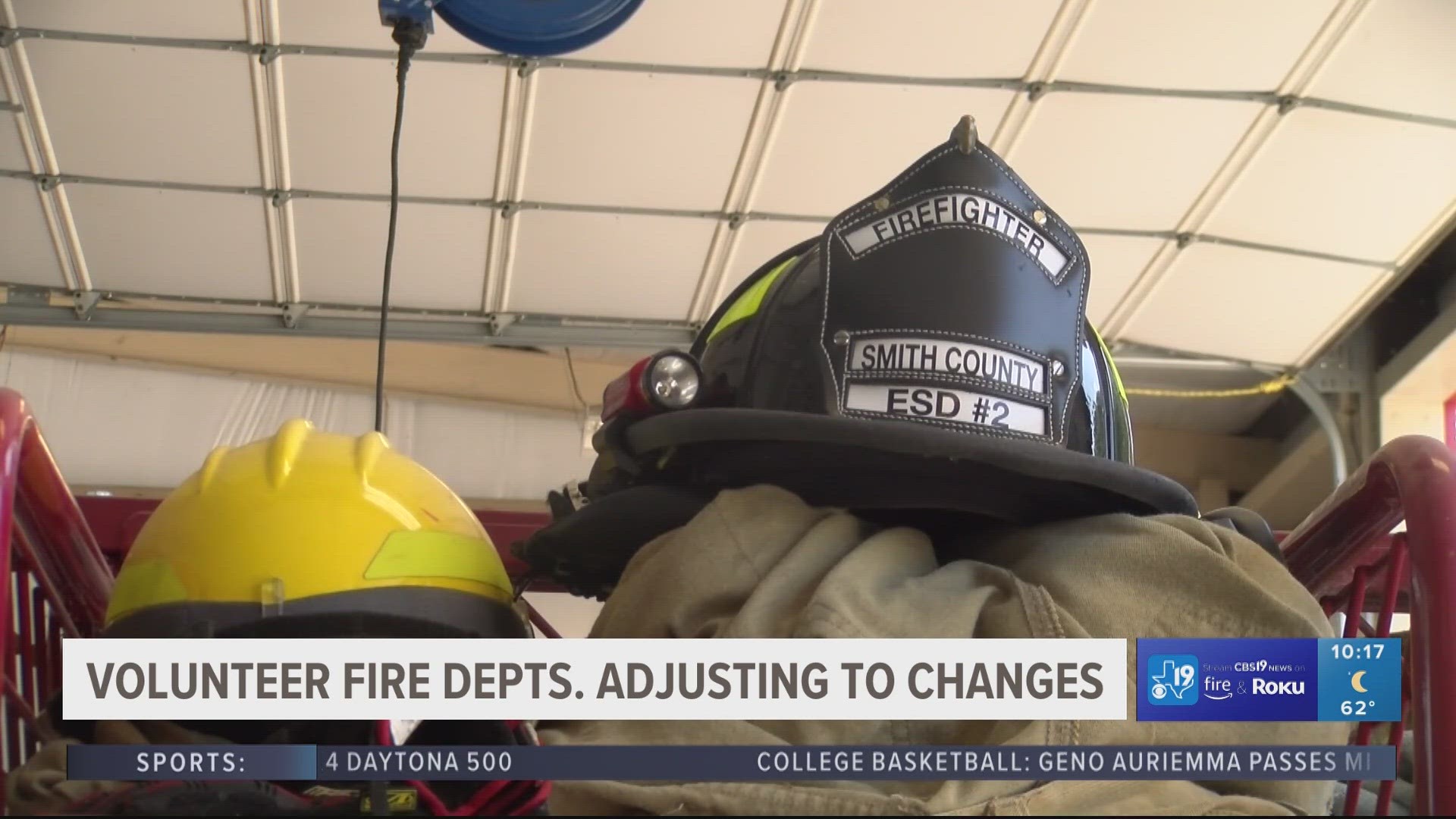SMITH COUNTY, Texas — Editor's Note: This is the first part in a two-part series about the struggles of East Texas volunteer firefighters.
Smith County Emergency Services District 2 Chief Eric Greaser sees the impacts from the shortage of volunteer firefighters and struggles to recruit crew members every day.
"What you’re seeing in terms of volunteerism. This is not unique to Smith County; it’s occurring across the country. Trying to sustain a partial volunteer force is pretty difficult now," Greaser said.
The emergency services district was created to better improve response time in an environment where volunteer firefighters are in decline. There are 11 legacy volunteer fire departments that fall under its care.
"Of those, several are experiencing decline in volunteers in terms of the total numbers that are able to answer calls on behalf of Smith County ESD2," Greaser said.
Smith County ESD2 has three firefighters at each fire station per shift. Since January 2023, they have recruited over 40 firefighters.
"Those are professional firefighters with full credentials including their EMS certifications to answer calls for us," Greaser said.
He added a lack of funding for volunteer fire departments is one of the main reasons there has been an increase of emergency services districts across the Lone Star State.
"In the case of Smith County, we have ad valorem taxation and sales tax that pay for the necessary tools and equipment and also the salaries and benefits to staff these areas appropriately," Greaser said.
In a neighboring county, the Judson Fire Department is a part of the Gregg County Emergency Services District 3. Turning volunteer fire departments into ESDs leverages funding and retention for small rural fire departments.
"We’ve expanded our training. We’ve expanded our capabilities of what we can do to better provide for the city and the county," Judson Fire Department Chief Chris Jackson said.
That’s thanks to the ESD funding through taxes and the municipal fire department training that gets passed down to rural areas.
It’s a working relationship between local volunteer fire departments and municipal fire departments – training that is learned at one can be taught at another and vice versa.
"(To) have diversity and different places to learn different types of training is good to bring that back," Jackson said.

